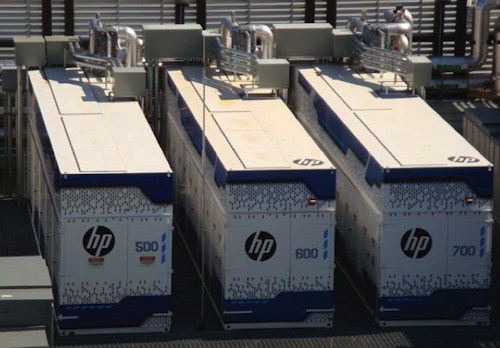A post in the occasional Competing with the Cloud series intended for enterprise IT.
Ten years ago few datacenter managers considered PUE – Power Usage Effectiveness – the ratio of total facility power divided by IT equipment power – as a competitive advantage. Everyone used the same equipment, at the same temperatures, so there was little difference to exploit.
But with the advent of warehouse scale computing PUE suddenly became important to Google and Amazon. Google pushed the adoption of efficient power supplies and analyzed power distribution infrastructure.
Five years ago the average data center PUE we was in the realm of 2.5, while Google was achieving 1.2. To put that in perspective, for every megawatt in, Google put 833KW to work, while the average data center put 400KW to work. Since power infrastructure costs as much as 10 years of power, the capex efficiency and opex reduction meant that enterprises had no chance to compete on power.
Until now.
At the recent HP Discover – where I was a guest of HP – I got a whirlwind tour of their HP 20ce Performance Optimized Datacenter – POD – from Wade Vinson, an HP Distinguished Technologist.
Wade outlined several benefits of the POD concept:
- Efficiency. Depending on locale and equipment PUEs under 1.1 are feasible.
- Code-compliance. The PODs are UL listed.
- Fast delivery. Available built to your specifications in 8-12 weeks, fully tested, software loaded, ready to plug in and go.
- Dense. Up to 450KW in the 40′ POD; 290KW in the 20′ POD.
- Flexible. Put PODs in a warehouse or outside in their weatherproof containers.
The PODs are available in 20 and 40 foot lengths and offer PUEs as low as 1.1 – competitive with best-in-class webscale data centers. They have a host of features to make operating them as practical as buying them. For example, on the 20ce POD, the entire rack slides forward to enable space-efficient access to the rear of equipment.
The StorageMojo take
IT vendors are facing their greatest challenge ever: the enormous scale and flexibility of cloud infrastructure. If they want to be in business in 10 years, they need to make enterprise scale infrastructure competitive with the cloud.
The PUE of HP’s PODs – competitive with Google and Amazon – and their quick delivery, make them a viable alternative to building greenfield datacenters. If you can predict your application load 3 months ahead, they are also an alternative to IaaS vendors.
PODs aren’t the only option, but they are solid evidence that major IT vendors can help enterprise IT compete with cloud. If you thought it was game over for small-scale datacenters, think again.
Courteous comments welcome, of course. More coming soon on another option to cloud IaaS.



Recent Comments